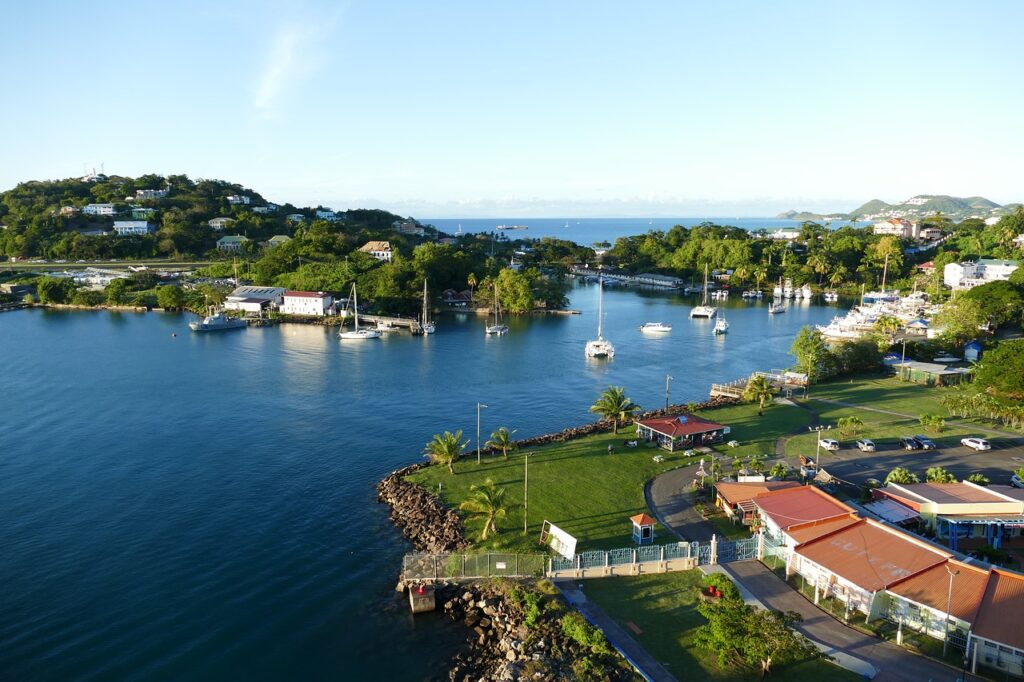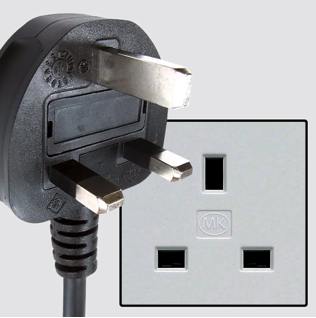Saint Lucia / Sent Lisi – Let’s explore here

What’s it like in Saint Lucia?
Saint Lucia consists of a small island in the Caribbean along with a number of much smaller islands. It’s a relatively small country, just a bit larger than the Isle of Man, England, UK, being approximately 27 miles (43 km) long and 14 miles (23 km) wide.
It mostly consists of mountains and forest on Saint Lucia, being part of a volcanic chain. The highest point is Mount Gimie at 3,120 ft (950m) above sea level. Saint Lucia is also home to the world’s only drive-in volcano, the Sulphur Springs.
The population of Saint Lucia is around 179,000 (2018) and its capital, Castries, is home to around 20,000 people. It relies heavily on tourism like many other Caribbean islands.

A bit about the history of Saint Lucia
Early History and European Exploration
Saint Lucia was originally inhabited by the Carib and Arawak peoples before the arrival of Europeans. In 1498, Christopher Columbus arrived on the island during his fourth voyage to the Americas, though the Spanish did not establish permanent settlements. Saint Lucia remained largely uncolonised by the Spanish due to resistance from the Caribs.
Colonial Era and European Rivalry
In the 17th century, the French and the British competed for control of Saint Lucia due to its strategic location in the Caribbean. The French established the first permanent settlement in 1643, but the British and French fought numerous battles for the island. Over the next century, control of Saint Lucia changed hands 14 times between the French and British, with both powers using the island as a base for sugar cultivation and trade.
British Control
In 1814, under the Treaty of Paris, Britain secured permanent control of Saint Lucia from the French. The British continued the sugar plantation economy, relying heavily on enslaved Africans for labour. Slavery was abolished in 1834, and the island’s economy shifted towards a combination of agriculture and industry. Saint Lucia remained a British colony until the mid 20th century.
Path to Self Government
Saint Lucia began moving towards self government in the 20th century. In 1967, the island became a self governing colony within the British Commonwealth. This allowed the island to elect its own government while remaining a British dependency. The political landscape during this period was dominated by the two major political parties, the United Workers Party and the Saint Lucia Labour Party.
Independence
On 22 February 1979, Saint Lucia gained full independence from the United Kingdom, becoming a sovereign state within the Commonwealth. The island retained the British monarch as head of state, represented by a governor general. The first Prime Minister of independent Saint Lucia was Sir John Compton.
Modern Saint Lucia
Since independence, Saint Lucia has worked to diversify its economy, with tourism becoming a major industry alongside agriculture. The island also developed a strong offshore financial sector. Saint Lucia has maintained political stability, with regular democratic elections. However, the country continues to face challenges such as economic dependency on tourism, vulnerability to natural disasters, and the need for sustainable development.


Saint Lucia road trip
Saint Lucia is our eighth planned stop on our road trip through the islands of the Caribbean. Having explored Saint Vincent and the Grenadines, our next stop is Martinique.
Travelling overland between the islands is quite prohibitive due to the lack of transportation options. Travelling between different island countries via ferry is possible, however, ferries only operate between some islands. Chartering private boats between islands is also possible, although travelling with a car in this way is prohibitive. Flying is another option, although again, flights only operate between some islands.
Map of our road trip through Saint Lucia

This is a map of our planned road trip around the island of Saint Lucia, starting and ending in the capital, Castries.
Weather in Saint Lucia
When is the best time to visit Saint Lucia?
The best time to visit Saint Lucia is from December to April. During these months, the islands have 8 hours of sunshine per day and rainfall of 2.6 – 5.1 inches (66 – 130mm) per month. The temperature ranges from 23 – 31°C (73 – 88°F).
When is the worst time to visit Saint Lucia?
The worst time to visit Saint Lucia is from June to November. During these months, the islands still have 8 hours of sunshine per day. However, humidity rises and it rains 6.2 – 9.9 inches (157 – 251mm) per month at the coast, more inland. The temperature ranges from 24 – 32°C (76 – 90°F).
Hurricane Season in the Caribbean
Hurricane season in the Caribbean runs from June 1 to November 30. Storms tend to be more frequent and more severe in the latter half of the season.
Hurricanes are least likely during December, January and February.
Travel in and around Saint Lucia
What’s it like to drive in Saint Lucia?
They drive on the left hand side of the road in Saint Lucia. Many of the roads in Saint Lucia outside of the capital are in a fairly poor condition, with many minor roads being dirt tracks.
We’ve also created a dedicated page to driving abroad, which you might find helpful.
Ferries to other Caribbean island countries from Saint Lucia
Travelling between Kingstown in Saint Lucia and Martinique
L’Express des îles Ferries travel between the islands of Saint Lucia and Martinique five days per week and the sailing takes 1½ hours.
Travelling between Kingstown in Saint Lucia and Dominica
L’Express des îles Ferries travel between the islands of Saint Lucia and Dominica five days per week and the sailing takes 4¼ hours.
Travelling between Kingstown in Saint Lucia and Guadeloupe
L’Express des îles Ferries travel between the islands of Saint Lucia and Guadeloupe five days per week and the sailing takes 7¼ hours.
What currency do they use in Saint Lucia?
In Saint Lucia they use the East Caribbean dollar. Cash is widely used. The use of credit / debit cards is widely accepted in major cities, although not in rural areas. Travellers cheques are not accepted in the main. There are ATMs in cities, although not all accept foreign issued cards.
You should make yourself aware of the amount that your bank charges you for using credit and debit cards abroad. Often credit cards are cheaper for purchasing items directly, and for withdrawing cash from ATMs.
What language do they speak in Saint Lucia?
They speak English and Creole in Saint Lucia. English is spoken in tourist areas.
What time zone is Saint Lucia in?
Remember, when you’re planning your next trip to take a look at what time zone it’s in.
Do I need a visa to visit Saint Lucia?
We’ve created a dedicated, more comprehensive page on visas, which you should find helpful. Check it out!
Is wild camping legal in Saint Lucia?
No, wild camping is not widely accepted in Saint Lucia.
What plug / socket type do they use in Saint Lucia?

In Saint Lucia they use plug / socket type G.
Health issues in Saint Lucia
Is it safe to drink water in Saint Lucia?
Yes, it is safe to drink tap water in Saint Lucia. Bottled water is also readily available across the country.
What vaccinations are required for Saint Lucia?
This NHS website is kept up to date with all relevant information on vaccinations in Saint Lucia.
Phones in Saint Lucia
What is the country calling code for Saint Lucia?
The country calling code for Saint Lucia is +1 758
What are the emergency phone numbers in Saint Lucia?
- The emergency number for police in Saint Lucia is: 911 / 999
- In Saint Lucia, the emergency number for ambulance is: 911 / 999
- The emergency number for fire in Saint Lucia is: 911 / 999
If you’ve got some useful info that you’d like to share, let us know!
And don’t forget to check out all the other pictures!
